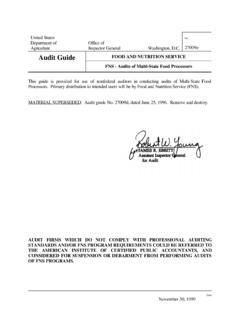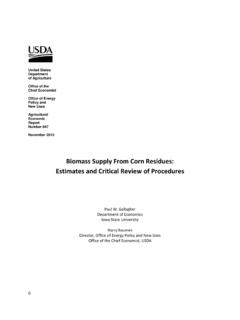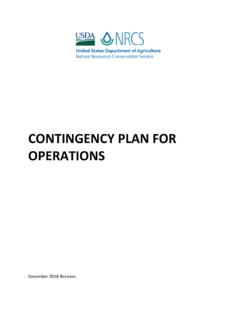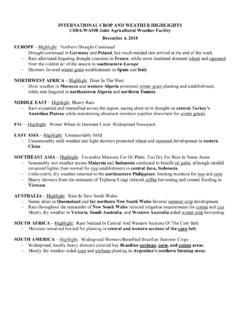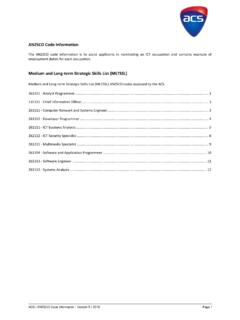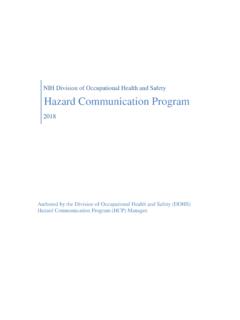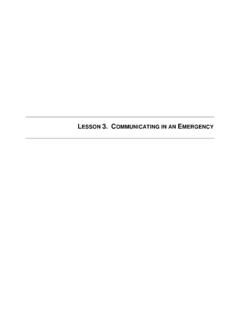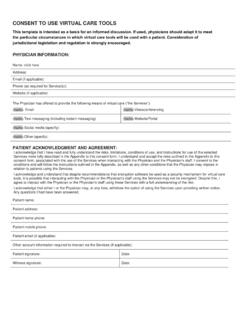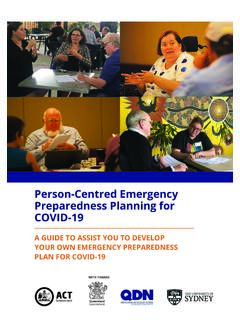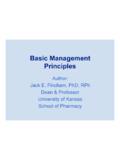Transcription of Lesson 1: What Is the National Incident Management System ...
1 Lesson 1: What Is the National Incident Management System (NIMS)? Summary of Lesson Content NIMS Page 1 Lesson Overview On February 28, 2003, President Bush issued Homeland Security Presidential Directive 5. HSPD 5 directed the Secretary of Homeland Security to develop and administer a National Incident Management System . NIMS provides a consistent nationwide template to enable all government, private-sector, and nongovernmental organizations to work together during domestic incidents.
2 This Lesson will describe the key concepts and principles of NIMS, and the benefits of using the System for domestic Incident response. At the end of this Lesson , you should be able to describe these key concepts, principles, and benefits. What is that National Incident Management System ? NIMS is a comprehensive, National approach to Incident Management that is applicable at all jurisdictional levels and across functional disciplines. The intent of NIMS is to: Be applicable across a full spectrum of potential incidents and hazard scenarios, regardless of size or complexity. Improve coordination and cooperation between public and private entities in a variety of domestic Incident Management activities.
3 NIMS Compliance HSPD-5 requires Federal departments and agencies to make the adoption of NIMS by State and local organizations a condition for Federal preparedness assistance (grants, contracts, and other activities) by FY 2005. Jurisdictions can comply in the short term by adopting the Incident Command System . Other aspects of NIMS require additional development and refinement to enable compliance at a future date. Why Do We Need a National Incident System emergencies occur every day somewhere in the United States. These emergencies are large and small and range from fires to hazardous materials incidents to natural and technological disasters.
4 Each Incident requires a response. Whether from different departments within the same jurisdiction, from mutual aid partners, or from State and Federal agencies, responders need to be able to work together, communicate with each other, and depend on each other. Until now, there have been no standards for domestic Incident response that reach across all levels of government and all emergency response agencies. The events of September 11 have underscored the need for and importance of National standards for Incident operations, Incident communications, personnel qualifications, resource Management , and information Management and supporting technology.
5 To provide standards for domestic Incident response, President Bush signed Homeland Security Presidential Directive 5. HSPD-5 authorized the Secretary of Homeland Security to develop the National Incident Management System , or NIMS. NIMS provides for interoperability and compatability among all responders. Lesson 1: What Is the National Incident Management System (NIMS)? Summary of Lesson Content NIMS Page 2 NIMS Concepts and Principles NIMS provides a framework for interoperability and compatibility by balancing flexibility and standardization.
6 NIMS provides a flexible framework that facilitates government and private entities at all levels working together to manage domestic incidents. This flexibility applies to all phases of Incident Management , regardless of cause, size, location, or complexity. NIMS provides a set of standardized organizational structures, as well as requirements for processes, procedures, and systems designed to improve interoperability. NIMS Components NIMS is comprised of several components that work together as a System to provide a National framework for preparing for, preventing, responding to, and recovering from domestic incidents.
7 These components include: Command and Management . Preparedness. Resource Management . Communications and information Management . Supporting technologies. Ongoing Management and maintenance. Although these systems are evolving, much is in place now. Command and Management NIMS standard Incident Management structures are based on three key organizational systems: The Incident Command System (ICS), which defines the operating characteristics, Management components, and structure of Incident Management organizations throughout the life cycle of an Incident Multiagency Coordination Systems, which define the operating characteristics, Management components, and organizational structure of supporting entities Public information Systems, which include the processes, procedures, and systems for communicating timely and accurate information to the public during emergency situations Lesson 1: What Is the National Incident Management System (NIMS)?
8 Summary of Lesson Content NIMS Page 3 Preparedness Effective Incident Management begins with a host of preparedness activities. These activities are conducted on a steady-state basis, well in advance of any potential Incident . Preparedness involves a combination of: Planning, training, and exercises. Personnel qualification and certification standards. Equipment acquisition and certification standards.
9 Publication Management processes and activities. Mutual aid agreements and Emergency Management Assistance Compacts. Resource Management When fully implemented, NIMS will define standardized mechanisms and establish requirements for describing, inventorying, mobilizing, dispatching, tracking, and recovering resources over the life cycle of an Incident . Communications and information Management NIMS identifies the requirements for a standardized framework for communications, information Management , and information -sharing support at all levels of Incident Management . Incident Management organizations must ensure that effective, interoperable communications processes, procedures, and systems exist across all agencies and jurisdictions.
10 information Management systems help ensure that information flows efficiently through a commonly accepted architecture. Effective information Management enhances Incident Management and response by helping to ensure that decisionmaking is better informed. Supporting Technologies Technology and technological systems provide supporting capabilities essential to implementing and refining NIMS. Examples include: Voice and data communication systems. information Management systems, such as recordkeeping and resource tracking. Data display systems. Supporting technologies also include specialized technologies that facilitate ongoing operations and Incident Management activities in situations that call for unique technology-based capabilities.


